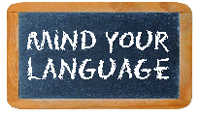AS Lynne Truss, in her delightful book titled Eats, Shoots and Leaves: The Zero Tolerance Approach to Punctuation highlights the importance of punctuation. The book features a punctuation-fan joke about a panda “who eats, shoots and leaves.”
If we remove the comma, the sentence describes the dietary habits of the panda. The black panda is a perennial favourite with the wildlife enthusiast and photographer alike, probably to the detriment of the red panda, a less exotic tree climber in the Asian and Indian forests. Pandas, irrespective of colour, invariably eat “shoots and leaves”. Shoots and leaves are words that double up as homographs (words with similar spellings but different meanings). In this instance, the addition of a punctuation mark changes the two homographs ‘shoots’ and ‘leaves’ from nouns into verbs.
For those unfamiliar with the animal, the introduction of the punctuation mark after ‘eats’ as in ‘eats, shoots and leaves’ allows the landscape of the sentence to change rapidly from pandas eating breakfast in a dense rainforest to a shootout in a city restaurant. Most readers are familiar with gang wars and shootouts that usually happen at restaurants around mealtimes, since the days of The Godfather in book and film avatars. The use of the punctuation mark grammatically involves the panda under discussion in three activities; namely, those of eating, shooting and subsequently leaving the scene. Truss’ sentence demonstrates the light-footed-ness with which a single punctuation mark can weave through homographs to significantly alter meaning.
Homographs work as nouns and verbs. Are they always modulated by punctuations? Not necessarily, as in the case of the word ‘bear’. (1) bear (n) is an omnivorous animal, (2) bear (v) highlights productivity (‘trees bear fruit’) and reproduction (mammals bear offspring), (3) bear (v) indicates ability to carry/ endure/tolerate. Knowledge of homographs demonstrates heightened levels of language proficiency, while appropriate use of punctuation enables the display of wit and verve.
Let us add our share to the fun started by Truss and look at the workings of the punctuation mark, this time in the instance of the homonym ‘panda’, used in her sentence. A homonym differs from a homograph as in ‘panda’ which describes two entities, animal and human, in two languages. Homonyms can have identical spellings but they do not necessarily change from nouns into verbs or vice versa. They also contribute to humour by creating comic misunderstandings, in the manner of homographs.
In the animal kingdom, the panda is a herbivorous animal. In the temple towns of North India, a ‘panda’ is the nomenclature of a priest. Indians, who are not wildlife enthusiasts, could easily come up with a new interpretation for the sentence. The majority of temple towns house aggressive ‘pandas’, known to badger (homograph: (1) animal (n): (2) to pester (v). An Indian reader, on hearing of a panda who eats, shoots and leaves, could very well assume that this was yet another variant of the priests that they customarily encountered, who could “(ch)eat, shoot and leave”. Between ritual fracas and gang rivalry, the correct use of homographs and homonyms stirs up quirky fun.
Unlock Exclusive Insights with The Tribune Premium
Take your experience further with Premium access.
Thought-provoking Opinions, Expert Analysis, In-depth Insights and other Member Only Benefits
Already a Member? Sign In Now











